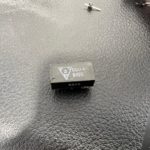Getting the Televideo 1605 Working!
Success! After some more investigation, I have been successful at getting this 40 year old Televideo 1605H working. The path was a bit more circuitous than I would have liked. When I last debugged I had determined the memory failure look like any write to memory followed by a read from memory would return what was just written, even if reading a different address. That suggested something was amok with the address lines going to the DRAM. I did some digging around in the schematic and had a few candidate parts that could be the problem source.
One such part was a 74LS158 used to multiplex the row and column address from the address bus. There are 2 of them and they have 8 bits in and 4 bits out each, plus a select line. I put the logic analyzer on both the inputs and the outputs as well as the RAS and CAS line for that bank. Sure enough I could see the RAS and CAS lines active while the BIOS RAM test was executing. Looking closer I could see the output of the 158 was staying with just one set of address lines (the high ones), and not switching to the lower address lines during the CAS line assertion. No doubt this would result in memory all accessing the same location for each ROW bank of memory.
Since the 158 didn’t seem to be switching, I took a look at the S input which should be toggling between each input in sync with the CAS and RAS lines. No changes at all so I look at the schematic to see the source which was a signal called RAM_SELECT which comes from another IC U43. U43 is a ‘Delay Line’ part which delays the switching of the multiplexer just long enough for the ram chips to latch in the ROW address. The 5150 PC has a similar part in its design.
I look around the board to find U43, and I find the socket, but no IC! Sure enough there is a socket labeled U43, but nothing in it. With no IC, there is no way that select line would ever work, and no way the machine could have worked. It isn’t any easy part to replace because I have no idea what the delay spec is. Since this machine was supposed to be working, I start digging around in the rest of the machine. Sure enough buried inside the floppy drive is the IC, bouncing around. It must have come off the board during shipping and made its way into a nice hidden location. I noticed the empty socket before, but there are several others on the board for other expansion use case so I didn’t think anything of it.
After getting the part back to its home the machine POSTed right up and just needs to be reassembled. It was an interesting learning opportunity and I was happy that the debugging lead the the right part, albeit missing.
Next up is to completely disassembly the machine so I can retrobright the case.
Fun Times!








